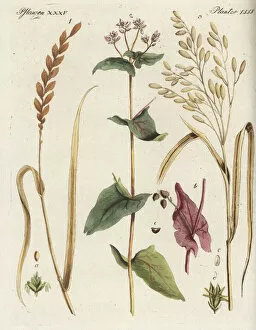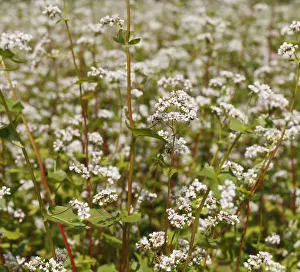Fagopyrum Collection
"Fagopyrum: Exploring the Versatility of Buckwheat and Rice" Spelt, buckwheat, and rice - these grains have long been staples in our diets
All Professionally Made to Order for Quick Shipping
"Fagopyrum: Exploring the Versatility of Buckwheat and Rice" Spelt, buckwheat, and rice - these grains have long been staples in our diets. But have you ever heard of Fagopyrum? Also known as buckwheat, this versatile plant belongs to the Polygonaceae family and is not only a nutritious food source but also an important ingredient in various cuisines. Buckwheat, scientifically referred to as Fagopyrum esculentum, has been cultivated for centuries due to its rich flavor profile and numerous health benefits. Its triangular seeds are commonly used in cooking, especially in dishes like pancakes or soba noodles. The distinctive taste of buckwheat adds a nutty undertone that enhances any recipe it's incorporated into. Another interesting species within the Fagopyrum genus is Tall Buckwheat (Fagopyrum acutatum). This particular variety stands out with its elongated stems and vibrant flowers. Curtis British Entomology Plate 406 showcases the beauty of these blossoms while highlighting their significance for pollinators. Common Buckwheat (Fagopyrum esculentum) can be found across Europe, including Franconia in Bavaria, Germany. With its delicate white flowers adorning fields during flowering season, it creates a picturesque landscape that captures the essence of rural Europe. In Lower Austria's Wine Quarter near Leobendorf lies another enchanting sight - Common Buckwheat thriving amidst vineyards. This resilient crop not only complements wine production but also contributes to sustainable farming practices by enriching soil quality through nitrogen fixation. Buckwheat seeds themselves are intriguing; small yet packed with nutrients such as fiber and essential minerals like magnesium and manganese. They serve as a healthy addition to any diet plan or culinary creation. And let's not forget about those black Japanese-style spoons adorned with kamut wheat, quinoa, and buckwheat.











